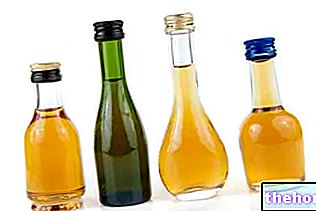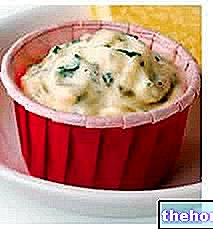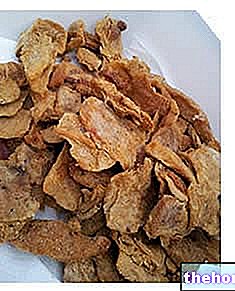Introduction
"Blends and emulsions packaged with food fats of animal and vegetable origin, other than butter and pork fat, containing more than 2% moisture and a fat content of not less than" 80 have the generic and mandatory name of margarine % "

Margarine is an emulsion of water in oil; more precisely it is made up of a lipid fraction, an aqueous one and some minor constituents (dyes of natural origin, antimicrobials, emulsifiers and preservatives). The aqueous fraction consists of water or milk (in Italy the addition of this ingredient is not allowed), while the lipid fraction contains vegetable oils and fats, including peanut oil, corn germ, grape seed, soybean, sunflower, rapeseed. The blends of fats that can be used are the most disparate, some may be composed of one or two components, but the use of several oils and fats is not uncommon. The choice depends on the cost, quality and type of margarine you intend to produce.
The margarines on the market are all of vegetable origin, while those containing animal fats go under the name of oleomargarine and are used only in the industry, especially in the confectionery industry.
Since oil and water are liquid at room temperature, to obtain the semi-solid consistency typical of margarine it is necessary to perform a chemical hydrogenation operation. Depending on the number of saturated double bonds, more or less compact margarines will be obtained. L "hydrogenation takes place by blowing hydrogen gas into special tanks, equipped with heating jackets and using nickel as a catalyst. Alternative techniques to traditional hydrogenation are intersesterification and fractionation.
Traditional preparation
The two phases are prepared (aqueous and fatty): on the one hand the water and all the other water-soluble ingredients (sodium chloride, citric acid, tartaric acid and phosphoric acid ...), on the other the oil previously added to emulsifiers, hydrogenated and brought to melting temperature. These two phases are then combined and hot emulsified; the subsequent cooling will lead to an emulsion of solid consistency. The final kneading operations have the purpose of making the product homogeneous and improving its spreadability. The cooling phase is also fundamental, which causes the crystallization of the emulsion, giving different characteristics depending on the speed of the process.
In margarine we have a prevalence of palmitic and stearic acid, which derive respectively from the saturation by hydrogenation of palmitoleic and oleic acids present in vegetable oils.
Homemade Margarine
Homemade Margarine - Vegetable Butter
- Go to the Video Page
- Go to the Video Recipes Section
- Watch the video on youtube
Classification
- Monoseme margarine (if they come from a single plant species, for example corn margarine, peanut margarine, etc.);
- Polyseme or mixed margarines (if they come from a mixture of vegetable oils).
Monoseme and polyseme margarines make up the so-called table margarines, that is, those present in the supermarket and intended for daily consumption.
From a product point of view, the following are distinguished:
- Table margarines.
- Industrial or pastry margarines: they may also contain fats of animal origin, including fish oil.
- Dietary margarines: characterized by a high percentage of polyunsaturated fatty acids, therefore a little more liquid.
- Light margarines with reduced fat content, in which a lipid percentage of 80% or more is passed to 60 - 62%.
- Light margarines with low fat content (only 40 - 42%).
Legislation
- Free acidity, expressed as oleic acid, not exceeding 1%
- Fat substance not less than 80%
- Absence of fats deriving from milk or hydrocarbons of mineral origin (synthetic oils)
- Absence of traces of catalyst
It is allowed to add:
- Antimicrobial additives (sorbic acid and its salts)
- Antioxidants, emulsifiers, thickeners
- Natural dyes (such as curcumin, carotenes, annatto)
- Sodium chloride, as a preservative substance but also as a flavor enhancer (in northern Europe salted margarines are consumed which in Italy do not meet the taste of consumers)
- Neoesperidina DC, as a flavor enhancer
Analyses
The analyzes that are carried out on margarine focus exclusively on the verification of legal requirements, since, since they can be prepared with very heterogeneous mixtures of substances, there are no specific analytical indices. This operation is performed by gas chromatography of fatty acids and sterols, exclusively for the control of single-seed margarines.
For this type of product and for all the others, a check will be carried out on the moisture content and on any traces of nickel (which we have seen to be the catalyst of catalytic hydrogenation).
Nutritional Values and Vegetable Margarine
760 Kcal
3179 Kjoule
Edible part
100 %
Waterfall
13.0 g
Carbohydrates
0.4 g
Fat
84.0 g
Proteins
0.6 g
Fibers
0 g
Butter or margarine?
From a nutritional point of view, butter is a more genuine food than margarine and contains less trans fatty acids. This aspect, associated with the lower content of palmitic acid (a molecule that promotes the synthesis of cholesterol), makes butter a less cholesterol-lowering food than margarine. The butter also contains the mineral salts and vitamins typical of the starting milk.
Today, on the market it is also possible to find margarines "free of hydrogenated fatty acids" (with a negligible content of trans fatty acids); not only that, we can also find margarines fortified with plant sterols and omega-three, both with positive effects on the levels of cholesterol and triglycerides in the blood, but also with Vitamin D, which in addition to the known effect on bone health could contribute to the reduction of cardiovascular risk . These new generation products can be considered a sort of "revenge of margarines" which thus become a better food than butter in terms of metabolic impact and cardiovascular health. However, there remains the doubt about the quality of the oils used in their production, which at least in theory cannot be separated from the use of a certain percentage of coconut and palm oils. More generally, the solidity of margarine requires, for physical reasons, the presence of a certain amount of saturated fatty acids. Therefore, in the absence of added functional molecules (omega-three, sterols, vitamin D, Vitamin E etc.) it is questionable to consider a non-hydrogenated vegetable margarine better than butter, also in consideration of its highly elaborated nature (extraction and chemical refining of oils, interesterification with chemical catalysts, etc.).
Other Foods - Oils and Fats Peanut Butter Cocoa Butter Butter Greaves Wheat Germ Animal Fats Margarine Vegetable Cream Tropical Oils and Fats Frying Oils Vegetable Oils Peanut Oil Borage Oil Rapeseed Oil Krill Oil Poppy Seed Oil Seed Oil Pumpkin Avocado oil Hemp oil Safflower oil Coconut oil Cod liver oil Wheat germ oil Linseed oil Macadamia oil Corn oil Almond oil Hazelnut oil Walnut oil Olive oil Palm oil fish Rapeseed oil Rice oil Pomace oil Seed oil Soybean oil Grapeseed oil Extra virgin olive oil Sesame seeds and sesame oil Lard OTHER ARTICLES OILS AND FATS Categories Food Alcoholics Meat Cereals and derivatives Sweeteners Sweets Offal Fruit Dried fruit Milk and Derivatives Legumes Oils and Fats Fish and fishery products Salami Spices Vegetables Health recipes Appetizers Bread, Pizza and Brioche First courses Seconds pi acts Vegetables and Salads Sweets and Desserts Ice creams and sorbets Syrups, liqueurs and grappa Basic Preparations ---- In the Kitchen with leftovers Carnival recipes Christmas recipes Light diet recipes for Celiacs Recipes for Diabetics Recipes for Holidays Recipes for Valentine's Day Recipes for Vegetarians Protein Recipes Regional Recipes Vegan Recipes




























